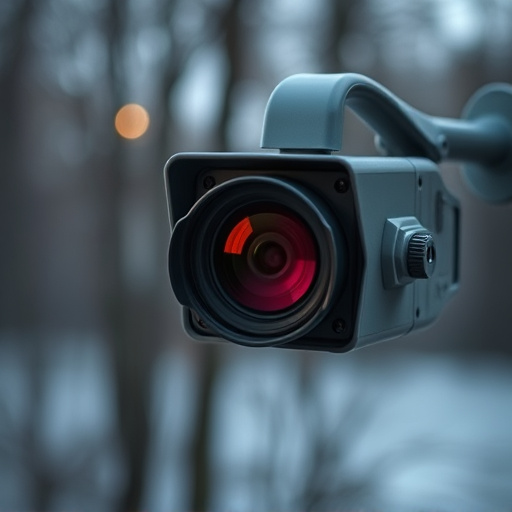Battery Operated Nanny Cam Systems provide discreet surveillance with long-lasting cameras that don't require power outlets. Before using an RF detector, charge batteries, identify hiding spots, and calibrate the device. Key components include a hidden camera module, rechargeable battery, and micro SD card slot. Strategically sweep areas, analyze frequencies for anomalies, and use software tools to document results.
Uncover hidden surveillance with our comprehensive guide on detecting Battery Operated Nanny Cam Systems using an RF detector sweep. Learn how these compact cameras, powered by long-lasting batteries, operate wirelessly, and why identifying their components is key to successful detection. This tutorial walks you through preparing for a sweep, from gathering necessary tools to analyzing results effectively. Discover the step-by-step process of detecting wireless signals and gain valuable insights into securing your privacy.
- Understanding Battery Operated Nanny Cam Systems
- Preparing for an RF Detector Sweep
- Identifying Hidden Camera Components
- Detecting Wireless Signals: A Step-by-Step Guide
- Analyzing and Documenting Results Effectively
Understanding Battery Operated Nanny Cam Systems
Battery Operated Nanny Cam Systems are a discreet and convenient way to monitor your home or office. These compact, self-contained cameras run on standard batteries, eliminating the need for complex wiring or power outlets. They’re often designed with long-lasting batteries that can operate for days or even weeks on a single charge, making them ideal for hidden camera applications where constant power isn’t readily available.
These systems are especially popular among parents who want to keep an eye on their children’s caregivers, or businesses aiming to prevent theft and ensure employee integrity. The simplicity of battery-operated Nanny Cam Systems makes them easy to install and conceal, allowing you to capture unaltered footage without raising suspicion.
Preparing for an RF Detector Sweep
Before conducting an RF detector sweep, it’s crucial to prepare your Battery Operated Nanny Cam System for optimal performance. Start by ensuring all batteries are fully charged and in good condition. This guarantees that your camera will operate smoothly during the sweep, providing uninterrupted surveillance. Next, locate all potential hiding spots where a hidden camera might be placed. These could include corners, behind furniture, or under objects in rooms you’re monitoring.
Additionally, familiarize yourself with the RF detector’s capabilities and limitations. Understand its frequency range to ensure it can detect signals emitted by your specific Nanny Cam System. Test the device beforehand to calibrate and adjust settings, maximizing its sensitivity while minimizing false positives from other wireless devices in the area.
Identifying Hidden Camera Components
When it comes to identifying hidden camera components, especially in a Battery Operated Nanny Cam System, understanding the key parts is essential for effective detection. These systems often include a compact and discreet camera module, typically housed within a small casing that can resemble everyday objects like toys or fire detectors. The camera itself is usually equipped with an infrared LED light for low-light visibility and motion sensors to trigger recordings.
Additionally, these systems rely on a hidden power source, which could be a rechargeable battery, often disguised within the housing. Some models may also feature a micro SD card slot for storing video footage and a button or app control mechanism for activation. By familiarizing yourself with these components, you’ll be better equipped to identify potential hidden cameras in various settings, ensuring your privacy is protected.
Detecting Wireless Signals: A Step-by-Step Guide
Detecting hidden cameras, especially those incorporated into battery-operated nanny cam systems, requires a systematic approach to uncover wireless signals. Start by identifying potential areas where the camera might be placed—hidden corners or crevices in rooms with frequent surveillance. Next, utilize a RF (radio frequency) detector, a powerful tool designed to pinpoint wireless devices.
Follow these steps: First, ensure your detector is calibrated and ready for use. Then, sweep the area systematically, moving in a methodical pattern. When the detector alerts you to a signal, investigate further. Battery-operated nanny cams often emit specific frequencies, so analyzing the readouts can help identify suspicious activity. Remember, thoroughness is key; check every corner, especially behind appliances or in narrow spaces where cameras might be concealed.
Analyzing and Documenting Results Effectively
After conducting an RF detector sweep, effectively analyzing and documenting the results is crucial. This involves meticulously reviewing the detected signals and identifying any anomalies or consistent patterns that could indicate the presence of a hidden camera. Utilizing advanced software tools designed for signal analysis can significantly aid in this process by providing detailed visualizations and data logs.
For instance, with a Battery Operated Nanny Cam System, it’s essential to capture and save all relevant data during the sweep. This includes frequency ranges, signal strengths, and any peculiar fluctuations. Clear documentation, such as screenshots or video recordings of the detector’s display, serves as valuable evidence in determining the camera’s location and operational frequency. These records will prove invaluable for further investigations or legal proceedings.
A battery operated nanny cam system can pose a significant privacy risk if undetected. By understanding the components of these hidden cameras and employing an RF detector sweep, individuals can proactively protect their personal spaces. This tutorial equips readers with the knowledge to prepare, identify, and detect wireless signals, ensuring peace of mind in today’s digital age. Remember that staying informed and vigilant is key to navigating this modern landscape.
